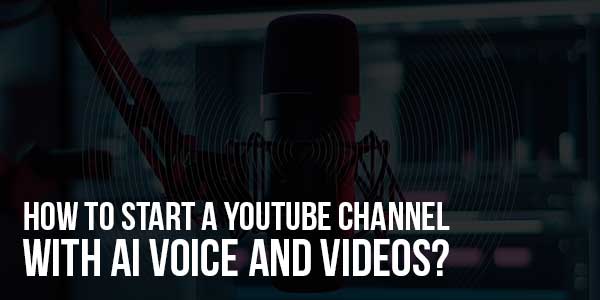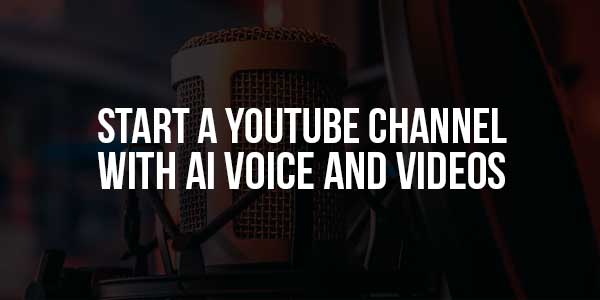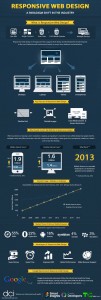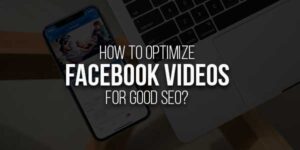
Ever found yourself scrolling through YouTube, watching those fascinating faceless channels with perfect narration, and wondering, “How are they doing that?” I was exactly where you are about a year ago. The truth is, many of those channels are using AI tools to create compelling content without ever showing their face or using their own voice.
And here’s the secret: you can do it too. Starting a YouTube channel with AI voice and videos isn’t just possible—it’s becoming increasingly popular for creators who want to maintain privacy, overcome camera shyness, or simply scale their content production. Let me walk you through exactly how to do it, step by step.
Table of Contents
Why Consider AI For Your YouTube Channel?
Before we dive into the how, let’s talk about the why. Why would anyone choose AI over their own charming personality and beautiful face? Well, there are actually several compelling reasons:
- Privacy: Not everyone wants to be a public figure. Using AI allows you to create content while maintaining your anonymity.
- Scalability: Once you have a system in place, you can produce content much faster than traditional methods.
- Accessibility:
If you have speech impediments or accent concerns, AI voice can provide a clear, professional narration. - Consistency: AI never has an off day, a sore throat, or background noise issues.
- Experimentation: You can test different content types without investing in expensive equipment upfront.
But here’s the real question: does it actually work? Can AI-generated content really compete with human-created content? From my experience—absolutely. Some of the most successful educational, documentary, and explainer channels are using AI tools extensively. The key is knowing how to use these tools effectively, which is exactly what I’m going to show you.
Getting Started: The Foundation
Before you even think about AI tools, you need to lay the proper foundation. This is where most aspiring creators slip up—they jump straight into tools without considering strategy. Don’t make that mistake.
Finding Your Niche
What will your channel be about? This might seem like a simple question, but it’s crucial to your success. The best niches for AI-voiced channels typically include:
- Educational content and explainers
- Documentary-style videos
- List-based content (Top 10s, etc.)
- Historical accounts
- Product reviews (with footage)
- Mystery and horror storytelling
- Motivational content
Think about what you’re passionate about and what has proven audience demand. I always recommend checking out resources like How To Make Money On YouTube Without Making Videos to understand what types of content work well in this format.
Planning Your Content Strategy
Once you’ve chosen your niche, it’s time to think about your content strategy. Will you post weekly? Bi-weekly? What length videos will you create? How will you structure your videos?
I can’t stress enough how important it is to plan ahead. Create a content calendar for at least your first month of videos. This will save you from the “what should I make today?” panic that derails so many channels.
The most successful AI-voiced channels don’t rely on the AI to be creative for them—they use the AI as a tool to execute their well-planned content strategy.
The Tools You’ll Need
Now for the fun part—let’s talk about the actual tools you’ll use to create your AI-voiced YouTube channel. The landscape of AI tools is changing rapidly, but here are the categories you’ll need to consider:
AI Voice Generation Tools
This is the heart of your operation. You’ll need a text-to-speech tool that produces natural-sounding narration. The options have improved dramatically in recent years. Some popular choices include:
- ElevenLabs: Probably the most realistic AI voice generator available today
- Murf.ai: Great for different accents and languages
- Play.ht: Good for long-form content
- Speechelo: Budget-friendly option
- Amazon Polly: Technical option for developers
Most of these offer free tiers or trials, so you can test which one works best for your voice and style. I personally use ElevenLabs because the voices sound remarkably human, but your preference might differ.
Video Creation and Editing Software
You’ll need something to put your videos together. Options range from simple to professional:
- Adobe Premiere Pro: Industry standard but has a learning curve
- Final Cut Pro: Mac users swear by it
- DaVinci Resolve: Powerful and free version available
- CapCut: Surprisingly capable free option
- InVideo: Online editor with templates
- Pictory: AI-assisted video creation
If you’re just starting out, I’d recommend beginning with a free option like DaVinci Resolve or CapCut. You can always upgrade later as your channel grows.
Script Writing Assistance
While you could write all your scripts yourself, AI writing tools can dramatically speed up the process. Some options:
- ChatGPT: Great for brainstorming and outlining
- Claude: Excellent for longer-form content
- Jasper: Specifically designed for content creation
- Copy.ai: Good for marketing-focused content
Remember: AI writing tools are assistants, not replacements for your creativity. You’ll need to edit and refine whatever they produce to make it sound authentic and engaging.
Finding Visual Assets
Since you won’t be filming yourself, you’ll need sources for visual content. Options include:
- Stock footage sites (Pexels, Pixabay, Storyblocks)
- Archival footage (Internet Archive, Getty Images)
- Screen recording for software tutorials
- AI-generated visuals (Midjourney, DALL-E, Stable Diffusion)
- Public domain content
I often use a combination of these sources. For example, I might create background visuals with Midjourney, supplement with stock footage from Pexels, and add some screen recordings if I’m explaining a concept.
The Step-By-Step Creation Process
Now that you have your tools, let’s walk through the actual process of creating a video from start to finish. This is the exact workflow I use for my channels:
Step 1: Research and Ideation
Every great video starts with a great idea. I use a combination of tools to find topics that have audience demand:
- YouTube search suggestions
- Keyword research tools
- Trending topics in my niche
- Questions people are asking in forums
I also check out what’s working for other creators in my space—not to copy, but to understand what audiences are responding to. Resources like Top 10 Highest Paying Ad Networks For Publishers And Bloggers can give you ideas about profitable content areas.
Step 2: Script Writing
Once I have a topic, I start outlining the script. I typically:
- Create a detailed outline of the main points
- Use AI to help expand each section
- Edit heavily to make it sound natural when spoken
- Read it aloud (or have the AI read it) to check flow
- Add time markers for visual cues
Pro tip: Write in a conversational style. Use contractions, rhetorical questions, and occasional informal expressions—just like I’m doing in this post. This makes the AI narration sound more natural.
Step 3: Voice Generation
With your script ready, it’s time to generate the voiceover. Here’s my process:
- Break the script into manageable chunks (2-3 paragraphs each)
- Generate each chunk separately for better quality control
- Adjust pacing, emphasis, and tone where needed
- Listen carefully for any odd pronunciations
- Export as high-quality MP3 files
Don’t be afraid to regenerate sections that don’t sound quite right. The small details make a big difference in how professional your final product sounds.
Step 4: Visual Creation and Sourcing
While the voice generation is happening, I work on gathering visuals. My approach:
- Create a rough storyboard based on the script
- Source stock footage and images that match each scene
- Create any necessary text overlays or graphics
- Generate AI visuals if needed for specific concepts
- Ensure all visuals are properly licensed for use
This is where your creativity really comes into play. Think about how to make your visuals engaging—use movement, transitions, and variety to keep viewers interested even though there’s no human on screen.
Step 5: Video Editing and Assembly
Now comes the assembly process. I:
- Import the voiceover into my editing software
- Arrange visuals to match the audio
- Add background music (crucial for setting tone)
- Include sound effects where appropriate
- Add text overlays for emphasis
- Color grade for consistency
- Create a compelling thumbnail
Editing is where okay videos become great ones. Pay attention to pacing—cut between visuals frequently (every 3-5 seconds) to maintain viewer engagement.
Step 6: Optimization and Publishing
Before you hit publish, optimize your video for discovery:
- Craft a compelling title with keywords
- Write a detailed description with timestamps
- Add relevant tags
- Create an engaging end screen and cards
- Choose the best thumbnail (test multiple options if possible)
This optimization phase is critical for your video’s success. I’ve seen mediocre videos perform well because of great optimization, and amazing videos flop because this step was neglected.
Growing Your Channel
Creating great content is only half the battle. You also need to grow your audience. Here are strategies that have worked for me:
Consistency Is Key
YouTube’s algorithm favors channels that upload consistently. Choose a schedule you can maintain—whether that’s once a week or twice a month—and stick to it. Your subscribers will come to expect your content and anticipate your next upload.
Engage With Your Audience
Even though you’re using AI for your voice, you should still engage with your audience in the comments. Respond to questions, ask for feedback, and build community. This human touch makes a big difference in building loyal subscribers.
Collaborate With Other Creators
Consider collaborating with other creators in your niche. You can create videos together, mention each other’s channels, or appear on each other’s podcasts. This exposes you to new audiences and adds credibility to your channel.
Promote Your Content
Don’t just rely on YouTube’s algorithm. Share your videos on relevant social media platforms, forums, and communities. But always make sure you’re adding value rather than just spamming links.
If you’re interested in monetization strategies beyond AdSense, check out resources like How To Make Money Online Without Investment For Free for additional ideas.

Ethical Considerations and Best Practices
As with any technology, there are ethical considerations when using AI for content creation. Here’s my approach:
Be Transparent
I’m a big believer in transparency. While you don’t need to put “AI-Generated” in your title, consider mentioning it in your video description or about page. Most viewers won’t care as long as the content is good, but honesty builds trust.
Add Value
The AI is a tool, not the creator. You’re still providing the ideas, research, and creative direction. Focus on creating value for your viewers rather than just churning out content.
Respect Copyright
Just because you can use AI to create content doesn’t mean you can ignore copyright laws. Always use properly licensed assets, and create original content rather than repurposing others’ work without permission.
Maintain Quality Control
AI tools still require human oversight. Listen to your voiceovers before publishing to catch any strange pronunciations. Review your visuals for relevance and quality. The human touch is what separates good AI content from bad AI content.
Common Pitfalls to Avoid
As someone who’s made plenty of mistakes along the way, let me save you some trouble by sharing what not to do:
- Don’t choose a voice that sounds too robotic—viewers will click away
- Don’t neglect audio quality—bad audio is worse than bad video
- Don’t use generic stock footage—curate visuals that specifically match your content
- Don’t publish without watching your entire video first—always do a quality check
- Don’t expect immediate success—growth takes time and consistency
Remember, your goal is to create content that doesn’t scream “AI-GENERATED!” but rather makes viewers think, “This is interesting content!”
Measuring Success and Iterating
As you start publishing content, pay attention to your analytics. Which videos are performing well? What’s your audience retention like? Where are viewers dropping off?
Use this data to refine your approach. Maybe you need to work on your hooks to retain viewers in the first 30 seconds. Perhaps certain topics resonate more with your audience than others. Let the data guide your content decisions.
If you’re interested in other online income streams to complement your YouTube efforts, you might find value in exploring How To Earn Money By Playing Games Without Investment or Top 12 Best Free Classified Ad Posting Sites To Earn Money.
The Future of AI in Content Creation
AI tools are improving at an incredible pace. What sounds slightly robotic today might be indistinguishable from human speech tomorrow. The key is to stay adaptable and keep learning as new tools and techniques emerge.
Remember that the core principles of good content never change: provide value, tell compelling stories, and connect with your audience. The tools are just there to help you do that more efficiently.
Ready to Start Your AI YouTube Channel?
Starting a YouTube channel with AI voice and videos is an exciting journey. It’s opened up content creation to people who might never have considered it before, and it’s changing how we think about video production.
The barrier to entry has never been lower, but that means competition will increase. The time to start is now—while the technology is advanced enough to create quality content but before the market becomes saturated.
So what are you waiting for? Choose your niche, gather your tools, and create your first video. You’ll learn more by doing than by reading yet another article (though I appreciate you reading this one!).
Have questions I didn’t answer? Check out the FAQ section below, or explore resources like Top 10 Highest Paying Ad Networks For Publishers And Bloggers for more information on monetization strategies.
I can’t wait to see what you create!
Frequently Asked Questions (FAQs)
Is it legal to use AI voice for YouTube videos?
Yes, it’s legal to use AI voice for YouTube videos as long as you have the proper license for the voice software and you’re creating original content. However, you should always check the terms of service for your specific AI voice provider.
Can you monetize YouTube channels with AI voice?
Yes, you can monetize AI-voiced YouTube channels through the YouTube Partner Program, as long as your content meets YouTube’s guidelines, provides value, and is original. The voice itself isn’t a factor in monetization eligibility.
What’s the best AI voice generator for YouTube?
ElevenLabs is currently considered the best for natural-sounding voices, but Murf.ai, Play.ht, and WellSaid Labs are also excellent options. The “best” tool depends on your specific needs, budget, and the type of content you’re creating.
Do you need to disclose that you’re using AI voice?
While not legally required in most cases, transparency is recommended. Many successful creators mention their use of AI tools in their video descriptions or about pages. Viewers appreciate honesty, and it helps manage expectations.
How much does it cost to start an AI YouTube channel?
You can start with free tools and gradually invest as your channel grows. Basic startup costs might range from $0 (using completely free tools) to $50-100/month for premium voice and editing software. The main investment is your time, not money.
Can AI YouTube channels become successful?
Absolutely! Many AI-voiced channels have millions of subscribers and generate significant revenue. Success depends on content quality, niche selection, consistency, and marketing—not whether a human or AI provides the narration.
How long does it take to create an AI-voiced YouTube video?
Creation time varies based on video length and complexity, but an efficient creator can produce a 10-minute video in 4-8 hours once they’ve established their workflow. The process becomes significantly faster with practice and systemization.
What types of content work best with AI narration?
Documentary-style content, educational videos, listicles, historical accounts, product reviews (with footage), mystery storytelling, and motivational content tend to work well with AI narration. Content that doesn’t require emotional delivery or personal stories is ideal.
Will YouTube demonetize channels for using AI voice?
YouTube does not demonetize channels solely for using AI voice, as long as the content is original, ad-friendly, and complies with all other platform policies. The issue is content quality and compliance, not the voice technology itself.
How can I make my AI voice sound more natural?
To make AI voice sound natural: choose the right voice for your content, adjust speaking rate and pauses, use proper punctuation in your scripts, add background music, and consider slightly editing the audio to add human-like imperfections occasionally.


















Be the first to write a comment.